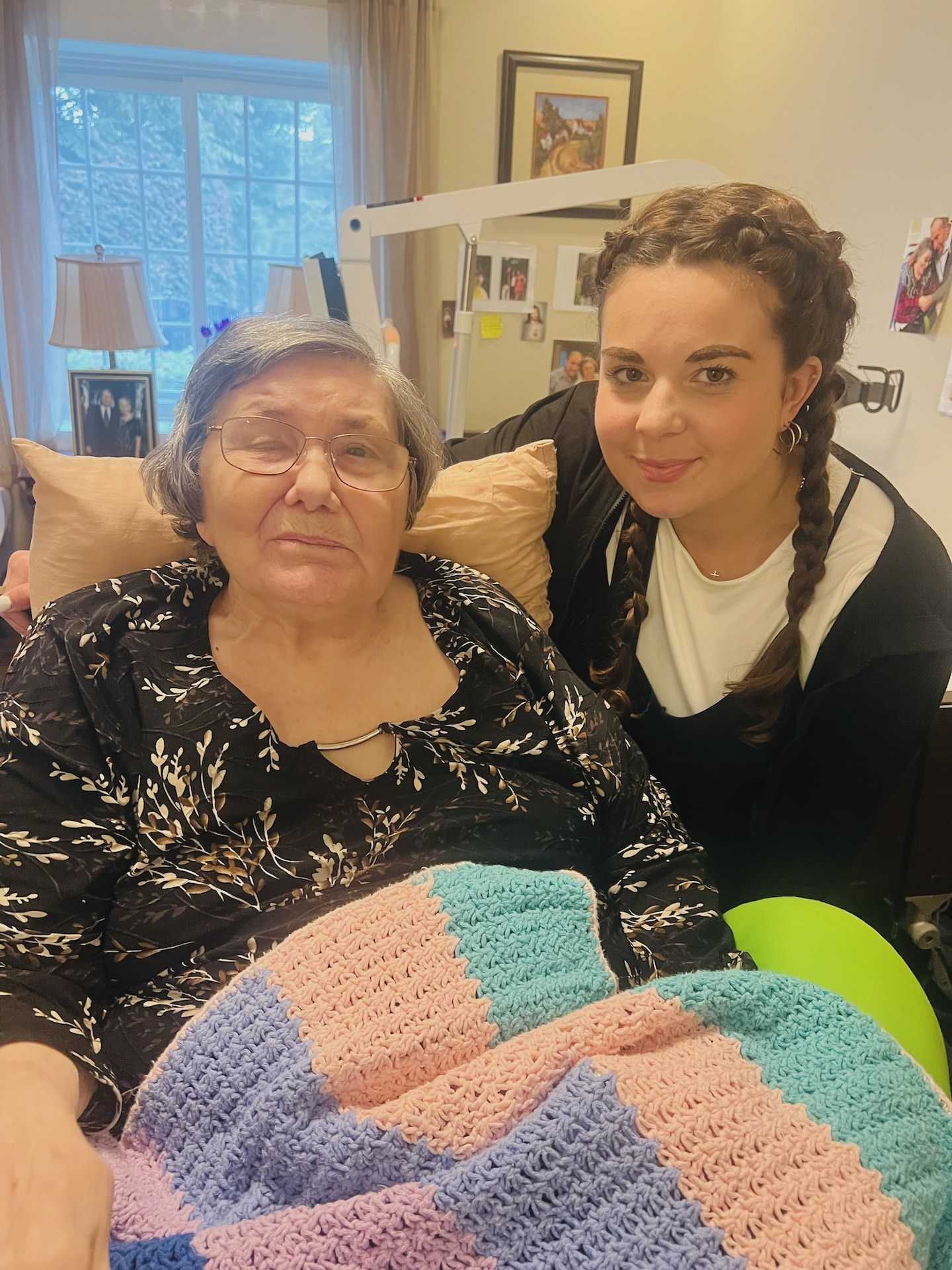The one food I have always identified with Portuguese culture and my family is traditional Portuguese bread, specifically the family recipe that has been passed down on my mom’s side through generations.
Both of my parents are fully Portuguese. Their parents grew up and lived in Portugal. In fact, that’s where my parents met, despite my mom living in the United States at the time.
Portuguese bread was my maternal grandmother’s specialty. She’s baked this simple, traditional bread for years.
My grandmother, whom I call Vóvó (a name for grandmother in Portuguese), had a difficult upbringing. She immigrated to the U.S. from the rural coast of Portugal in the early 1960s. She grew up poor and faced many hardships at a young age, including losing her mother. She decided to seek a new life on her own and came to the U.S., working as a seamstress and surviving off of nature’s gifts brought from her garden.
Vóvó would always ensure there was freshly cooked food on the table and always had her famous bread baking in the oven. She made it a point to teach all of her grandchildren how to bake this bread.
Vóvó suffered a severe stroke around three years ago where she nearly died. Her survival was a miracle after intense brain surgery and months of recovery. She now lives in a nursing home, paralyzed on the left side of her body, unable to talk, move, bake, sew or garden like she used to. Now, at family gatherings, my cousins and I bake and bring the bread to continue the tradition.
Over Fall Break, my mom and I made Vóvó’s bread. The recipe is simple, with only four ingredients: flour, salt, water and dry yeast. We began by taking a large bowl and pouring the flour into it, scooping it to the sides to form a gaping hole in the middle before adding the yeast and water. The smell transported me back to when I was little, standing on a stepstool and helping Vóvó measure out the ingredients.
After combining the ingredients, I kneaded the bread by forming my hands into fists and essentially punching the dough, turning it occasionally to ensure I was kneading all sides.
Kneading the dough is a pretty physical process, and my arm started to get fatigued after doing this for several minutes. I had flashbacks of when I was young, with Vóvó laughing at the dough getting stuck to the little hairs on my arms and helping me clean up the mess I created.
Next was the most important part: the blessing. Vóvó, a religious woman, taught me that this blessing had to be done every time we baked her Portuguese bread. While reciting the blessing, you are supposed to form a cross with the side of your palm, repeating until it is done. The blessing goes, “Saint Bento, Saint Bernardo, make the bread rise and God deliver us from all evil. Amen.” When I was younger, Vóvó would hold my hands as we crossed the bread together.
After the blessing, I covered the dough with a couple of towels and left it to rise for about two hours. Another trick I learned is to put the dough on top of a drying machine that has just finished a load as it helps the dough rise faster than two hours.
I then proceeded to section off the dough into different sized and shaped loaves. Two traditional ways are a circular loaf shape and a “twisted” loaf shape. I tried both, covering them in an additional thin dusting of flour before placing them in a hot oven set to 550 F.
After the bread finished baking and cooled off, my mom and I broke open the tough crust, hot steam emanating from the soft inside. We smeared a little bit of butter on the soft portion and took a bite, savoring the familiar taste and comfort. It was bread Vóvó would be proud of.

Ingredients:
5 pounds of flour
2 tablespoons of fine salt
2 cups warm water
3 packs of active dry yeast
2 more cups of water
Directions:
Preheat the oven to 550 F. In a large mixing bowl, add 5 pounds of flour, making a hole in the center of the flour. Add in 2 tablespoons of fine salt, 2 cups of warm water and 3 packs of active dry yeast. Mix everything together with hands, occasionally wetting them. Use fists to “beat” the mixture, turning all sides in. Add 2 more cups of water to keep the dough moist. Let dough rise for two hours and then bake for 20-30 minutes, until golden brown. Add some butter, and enjoy!














































